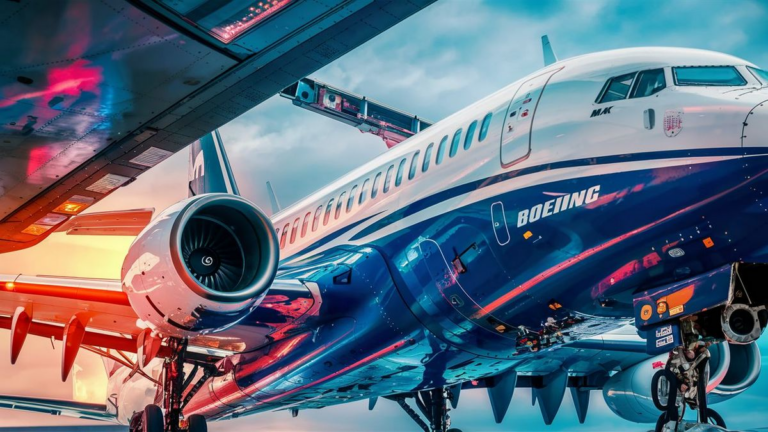Amidst ongoing concerns and debates, we delve into the safety aspects of the Boeing 737 Max 8, exploring various factors that contribute to its safety record and addressing the controversies surrounding it.
The Safety Standards of Boeing 737 Max 8
The Boeing 737 Max 8 is designed and manufactured with rigorous safety standards in mind. Boeing, as a leading aircraft manufacturer, adheres to stringent regulations and protocols set by aviation authorities worldwide, including the Federal Aviation Administration (FAA).
The aircraft undergoes comprehensive testing, evaluations, and certification processes before being cleared for commercial operations. These procedures involve thorough examinations of its systems, structures, and performance capabilities to ensure compliance with safety regulations.
Technological Advancements
The Boeing 737 Max 8 incorporates advanced technological features aimed at enhancing safety and efficiency. These include the Maneuvering Characteristics Augmentation System (MCAS), designed to prevent stalls and improve handling characteristics.
Furthermore, the aircraft is equipped with state-of-the-art avionics and flight control systems, along with enhanced aerodynamics, contributing to its overall safety performance.
Industry Collaboration and Oversight
The aviation industry operates within a framework of collaboration and oversight to maintain safety standards. Boeing works closely with regulatory authorities, airlines, and industry stakeholders to address any safety concerns promptly.
Continuous monitoring, analysis of safety data, and feedback mechanisms ensure that any potential issues are identified and mitigated effectively.
Operational Safety Measures
In addition to the aircraft’s inherent design features, operational safety measures play a crucial role in ensuring the safe operation of the Boeing 737 Max 8. Airlines implement comprehensive training programs for pilots and maintenance personnel, focusing on system familiarity, emergency procedures, and risk management.
Moreover, regulatory authorities conduct regular inspections and audits to verify compliance with safety regulations and standards.
Addressing Past Concerns
The Boeing 737 Max 8 faced scrutiny following two fatal accidents in 2018 and 2019, leading to the grounding of the aircraft worldwide. Subsequent investigations identified issues related to the MCAS and pilot training, prompting Boeing to implement extensive modifications and enhancements.
Through collaborative efforts with regulatory agencies and industry partners, Boeing addressed the identified concerns, making significant improvements to the aircraft’s systems and ensuring comprehensive pilot training on the revised procedures.
Overall, the Boeing 737 Max 8 is built and operated with safety as a paramount consideration. Through continuous advancements, collaboration, and proactive measures, the aviation industry remains committed to ensuring the safety of passengers and crew aboard the aircraft.
Frequently Asked Questions
Here are some commonly asked questions regarding the safety of the Boeing 737 Max 8:
| Question | Answer |
|---|---|
| 1. What is MCAS? | MCAS stands for Maneuvering Characteristics Augmentation System. It is a software feature designed to automatically adjust the aircraft’s angle of attack to prevent stalls. |
| 2. How has Boeing addressed past safety concerns? | Boeing has implemented extensive modifications and enhancements to the 737 Max 8, particularly focusing on the MCAS system and pilot training. These changes aim to improve the aircraft’s safety and address the issues identified in past accidents. |
| 3. What role do regulatory authorities play in ensuring the safety of the 737 Max 8? | Regulatory authorities, such as the FAA, play a crucial role in certifying the aircraft’s safety and overseeing its operations. They conduct inspections, audits, and evaluations to ensure compliance with safety regulations and standards. |
| 4. Are there ongoing efforts to enhance the safety of the Boeing 737 Max 8? | Yes, both Boeing and regulatory agencies continue to collaborate on improving the safety of the 737 Max 8. This includes ongoing evaluations, modifications, and training programs aimed at enhancing the aircraft’s safety features and addressing emerging concerns. |
Environmental Sustainability
In addition to safety considerations, environmental sustainability is becoming an increasingly important aspect of aircraft design and operation. Boeing has been actively working on initiatives to reduce the environmental impact of its aircraft, including improving fuel efficiency, exploring alternative fuels, and implementing recycling programs.
By incorporating eco-friendly practices into its operations, Boeing aims to minimize the carbon footprint of its aircraft and contribute to a more sustainable aviation industry.
See also:






